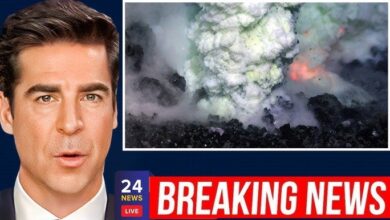Mount St. Helens Rumbling as Eruptions Predicted 3 Days Ahead

Mount St. Helens, located in Washington State, has been experiencing significant seismic activity, with hundreds of small earthquakes shaking the ground since February. These tremors have drawn the attention of geologists and volcanologists who are monitoring the volcano, wondering whether this is a sign of a potential eruption similar to its infamous 1980 eruption.
In response, scientists have made a groundbreaking discovery—a new technique that could predict eruptions up to three days in advance.
Since early February, about 350 earthquakes have been detected beneath the volcano, most of which were too small to be felt by people in the area, with around 95% registering below magnitude one. However, a more significant spike occurred in early June when 38 earthquakes were reported in a single week.

These tremors are linked to a process called “recharge,” where fresh magma moves upward from the Earth’s deeper crust, accumulating in reservoirs beneath the volcano. While the current seismic activity is notable, experts at the USGS maintain that it is still within the normal range for an active volcano like Mount St. Helens. This activity does not indicate that an eruption is imminent.
Seismologist Seth Moran explained that fluctuations in seismic activity are common for Mount St. Helens. Past eruptions, such as those from 2004 to 2008, provide valuable data that scientists continue to study in order to improve monitoring tools and predictive techniques. Although the seismicity is higher than recent years, it is still considered part of the natural volcanic process.
In addition to studying the seismic activity, scientists have been using advanced technology to track other signs of volcanic behavior, including gas emissions and ground deformation. While an eruption is not immediately expected, researchers are working on new predictive tools that could provide earlier warnings, allowing for better preparation and evacuation efforts if necessary.

In a promising development, researchers at the University of Granada have created a machine learning algorithm that successfully predicts volcanic eruptions, specifically focusing on Mount St. Helens. The algorithm, trained on historical data from the volcano, achieved a 95% success rate in predicting eruptions up to three days in advance. This breakthrough could be crucial for enhancing public safety by providing more time to prepare for potential eruptions.
Despite the recent increase in seismic activity, Mount St. Helens remains one of the most closely monitored volcanoes in the world. While no eruption is imminent, scientists continue to closely track changes beneath the surface, understanding that even small shifts could signal larger events in the future.








